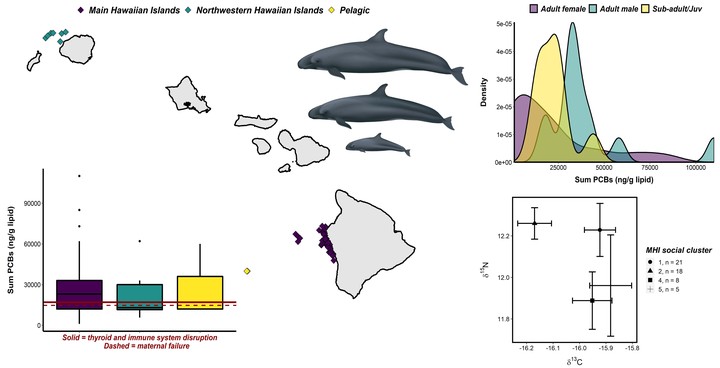Drivers of variance in pollutant and stable isotope levels in Hawaiian false killer whales

False killer whales are long-lived apex predators, making them more susceptible to bioaccumulation of persistent organic pollutants. There are three genetically distanct stocks of false killer whales in the Hawaiian Islands: a pelagic, Northwestern Hawaiian Islands (NWHI), and main Hawaiian Islands (MHI) stock. The latter population is comprised of at least 4-5 cohesive social groups or “clusters”, consisting of highly-related and regularly-interacting individuals. The MHI stock was listed as “endangered” in 2012 in light of precipitous decline over recent decades. Among the major threats to their long-term viability was the risk of adverse health effects associated with exposure to perisistent organic pollutants (POPs). We conducted a comprehensive study on how POP levels are influenced by life history characteristics and social clusters, and identified demographics at greatest risk of effects associated with exposure. We also assessed variability in stable isotope values among social clusters to gain insight into MHI foraging ecology.